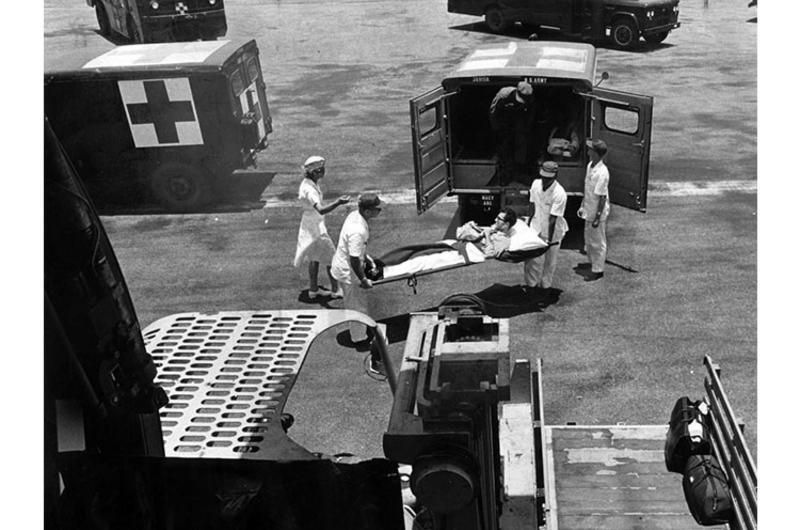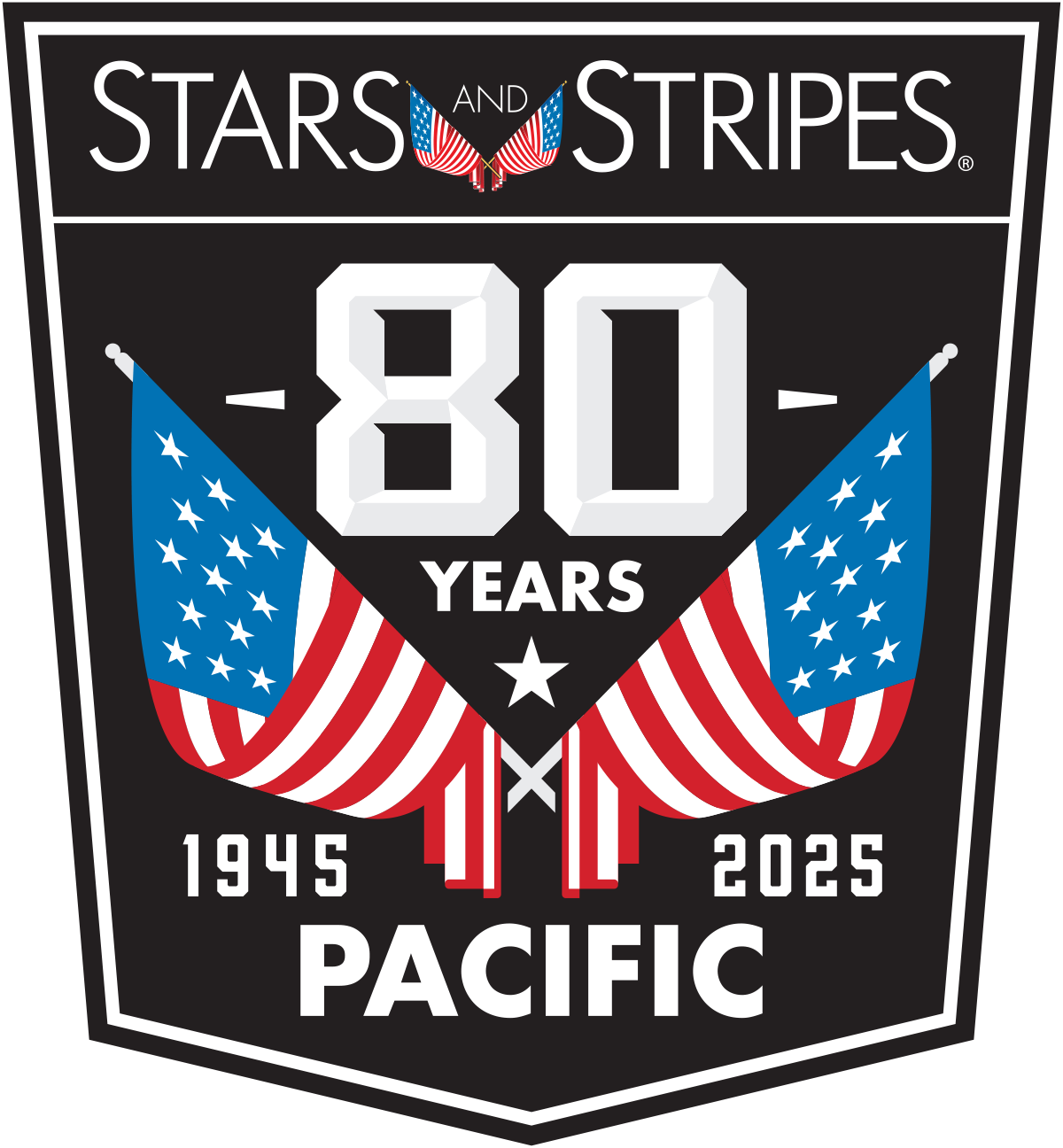Vietnam wounded go 1st class on air ambulance

Wounded servicemen are taken from the air evacuation plane at Clark Air Base, P.I., in 1965 for treatment in the hospital there.
By Joseph Schneider | Stars and Stripes May 19, 1965
CLARK AB, P.I. — The big "Connie" spat puffs of white smoke as her four engines roared into life. Soon the plane was racing over the concrete runway and she became airborne, climbing into the dawn sky.
Twin-peaked Mount Arayat, Clark's "trademark," faded into the distance. The "flying ambulance" was on its way to the Republic of Vietnam.
Air Force Capt. Johnie Lomax, flight nurse, peered over several sheets of paper filled with the names of U.S. military men — some wounded, some ill — products of the war in Vietnam.
Johnie, who speaks with the magnolia-scented accent that flourishes in Nashville, Tenn., knew what to expect when the plane reached its destination.
Through the marvels of modern communications and sound organization, a list of patients and their ailments had been received at Clark before takeoff.
Air Force medical technicians SSgts. Leroy Gillett and Robert W. O'Connor arranged stretchers in the rear section of the C-121 Super Constellation. Navy flight attendants worked to see that everything was in order.
Four hours after takeoff the plane touched down at Tan Son Nhut AB, Vietnam. No sooner had the plane's engines become silent than a fork lift appeared. The operator lined up the platform with the plane's rear entrance.
Then ambulances drove up and men on stretchers were taken from the vehicles and placed on the platform and lifted up to a level with the rear exit. The patients were then carried inside the plane where the stretchers were made secure.
One man, swathed in bandages, listened to the comforting words of a chaplain just before he was lifted up to the plane. Other patients with less serious illnesses and wounds were able to walk from the ambulances to the plane. They boarded and took their seats much in the same manner as passengers on a commercial flight.
Less than an hour after touchdown, the flying ambulance was winging its way to Nha Trang, north of Saigon.
The Connie was airborne about one hour when the deep blue waters and beautiful beaches of Nha Trang were sighted. The landing field was a bit on the bumpy side, but the plane made a reasonably soft landing.
Nha Trang was a repeat performance of Tan Son Nhut — the patients were loaded on the plane with the same gentleness and speed.
The flight nurse and the medical attendants had few idle moments as the plane droned homeward.
O'Connor and Gillett kept constant watch on the stretcher patients, making sure that each man was lying in the most comfortable position.
One of the patients had received severe burns when a grenade exploded. Two others were wounded when a bomb exploded in a bar. An officer had suffered a heart attack. There were cases of hepatitis, tonsillitis and gunshot wounds. In all, there were some 20 patients on this run.
The grenade, victim received a great amount of attention. He was given injections, to ease his discomfort, fluids were given and the, medical technicians made certain he suffered no unnecessary discomfort.
"He's doing very well," the flight nurse said, "we'll get those bandages off as soon as he is admitted to the hospital." The bandages were put over the burns to lessen the danger of infection setting in during the trip to Clark, Capt. Lomax said.
Then the first of the almost countless islands of the Philippines came into sight. A half hour later, Mount Arayat could be seen. Now the sun was setting behind the mountains in the west.
Not a moment was lost as the plane taxied to a stop. Air Force ambulances were waiting and the patients were soon on their way to the new U.S. Air Force Hospital at Clark.
Capt. Lomax's workday did not end until night had fallen and the patients had been checked into the hospital.
The Air Force flight nurse and the medical technicians are members of the 9th Aeromedical Evac. Sq., Det. 4. Capt. Lomax is the officer iii charge of the Clark-based detachment which has its headquarters in Tachikawa AB, Japan, and other units in Vietnam, Thailand, Okinawa and Korea. Lt. Col. Allen Sutton is squadron commander.
Working with the squadron is the Clark hospital's Air Evacuation Section which performs many of the administrative functions of the air evacuation mission.
While the flying ambulance is an Air Force plane it is flown by a Navy crew with Navy flight attendants. These men are members of the Air Transport Sq. Det. 7-A, based at Clark. Headquarters are at Tachikawa.
Several medical air evacuation flights are made to Vietnam each week. Flights are also made to other areas in Southeast Asia.
The U.S. Air Force Hospital Clark, built at a cost of over $4 million, has become the medical center of Southeast Asia. It serves U.S. military and civilian personnel throughout Southeast Asia.
Top-notch personnel staff the hospital, which has the most modern facilities. Col, John F. Schlechter is hospital commander.



